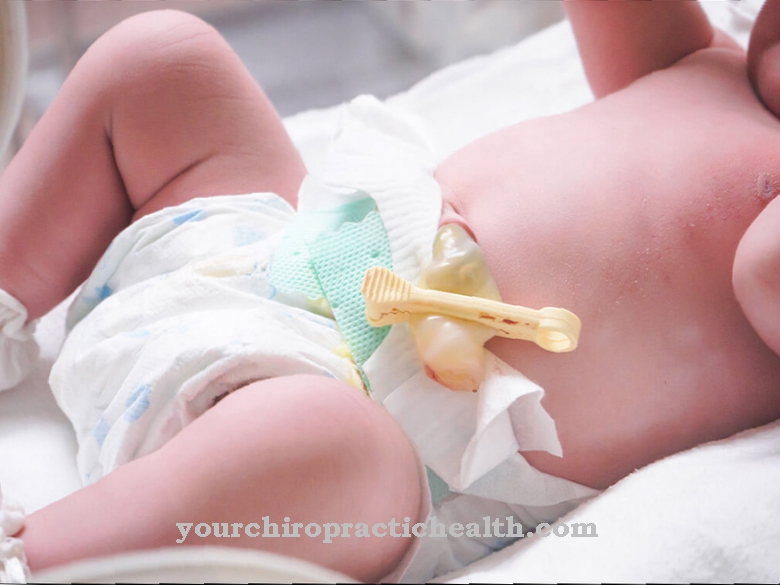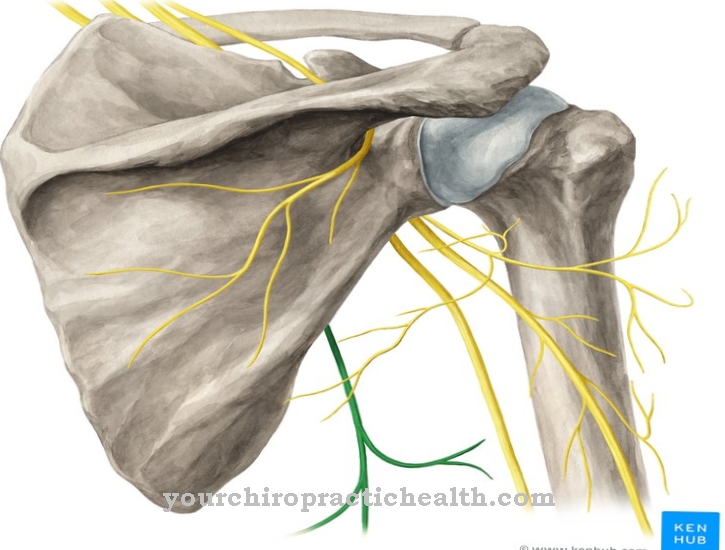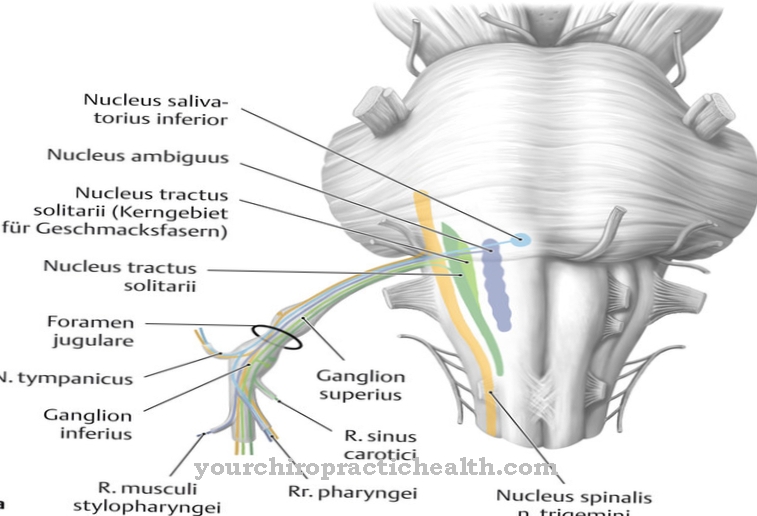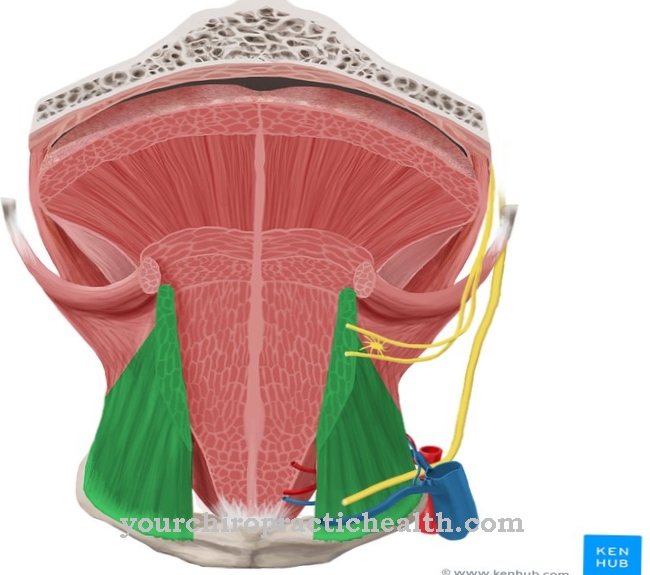What is the frontal bone
The Frontal bone sits in the upper frontal part of the human skull and thus partially encloses the brain. It also functions partially as a bone base for the human face. Its scientific name Frontal bone is derived from the Latin terms os (bone) and frons (forehead). The frontal bone is involved in the formation of the anterior cranial fossa as well as the orbital roof and is usually unpaired in adults after the cranial bones have grown together in the area of the fontanelles. The frontal sinuses as part of the paranasal sinuses are also contained within the frontal bone.Anatomy & structure
The frontal bone is roughly divided anatomically into three parts: The Squama frontalis, also called the frontal bone, the Pars orbitalis, as well as the Pars nasalis.
- The Squama frontalis, which in turn is divided into the facies externa and the facies interna, is vertical in correspondence with the human forehead. The facies externa is the outer surface, the facies interna refers to the surface of the squama frontalis lying on the inside of the skull.
Characteristic of the human skull as well as that of primates are the so-called eyebrow bulges (arcus superciliares) lying on the external face. These are typically more pronounced in men than in women.
- The Pars orbitalis forms the horizontal part of the frontal bone and consists of two triangular, thin bone plates, the orbital plates. Both orbital plates are pierced by a longitudinal seam. This part of the bone forms the roof of the human eye sockets and nasal cavity.
- The Pars nasalis forms the smallest section of the frontal bone and at the same time the connection between the two partes orbitales. The nasal spine protrudes from it, which together with the upper jaw (maxilla) and the nasal bone (os nasale) form the root of the nose. The nasal cavity is bounded by the bony part of the nasal part.
Function & tasks
The main purpose of the human skull is to protect the sensitive brain and to form the basis of bones for the human face. As a result, this is also in the brain skull (Neurocranium) as well as the facial skull (Viscerocranium) divided up. A peculiarity of the frontal bone is that the Squama frontalis as part of the anterior skull roof is assigned to the brain skull, while the pars orbitalis and pars nasalis fall under the definition of the facial skull. Accordingly, the functions of the frontal bone are assigned to both areas of responsibility.On the one hand, the Squama frontalis covers the human brain on the frontal side of the head and thus protects against external violence and the associated injuries to the sensitive organ. This part of the frontal bone also includes the frontal sinus, one of the paranasal sinuses. This is a cavity that lies within the bone and is created in pairs.
The frontal sinus is completely lined with mucous membrane and filled with air. It is primarily used to warm the air we breathe and to resonate with nasal sounds. Its function as a pneumatization space (air-filled cavity in the bone) is also an expansion of the mucosal surface and thus a defense against infection. This pneumatization space in the frontal bone also saves weight on the frontal bone, similar to that of other skull bones.
The pars orbitalis is counted as part of the eye sockets (orbit) of the facial skull. The orbit forms a pit on the skull about 4-5 centimeters deep, in which the human eye and its appendage organs are embedded. They serve as bony protection for the sensitive organs of vision. The openings inside also allow nerves, blood vessels and the tear duct to pass through.
The pars nasalis belongs to the roof of the nasal cavity, which in turn belongs to the upper respiratory tract. This inner space of the nose is connected to the outside world through the nostrils and thus enables the supply of vital air.
You can find your medication here
➔ Medicines for headaches and migrainesIllnesses & ailments
Frontal bone pain can indicate a variety of conditions. Very often this is an overwork headache due to too much stress and lack of time for physical and mental rest. However, the symptoms can usually be counteracted without any problems through short relaxation units in everyday life.
Headaches in the forehead area are also often among the main complaints in patients with migraines and cluster headaches. The exact causes of the latter two diseases have not yet been clarified, but so-called "triggers" can usually be identified, the triggers for the recurring headache attacks. These differ greatly from person to person, but can be specifically avoided after they have been determined.
Eye problems can also be the cause of said pain. Poor eyesight or other eye diseases are common triggers of headaches in the forehead and eye area and can go unnoticed by those affected without a specialist doctor.
In the context of colds there is also always the risk of sinusitis, an inflammatory change in the sinus mucous membrane caused by bacteria or viruses. The frontal sinus as part of the paranasal sinuses can be affected by this disease and cause the patient boring pain accompanied by a feeling of pressure.
Sinusitis can be acute or chronic and requires different treatment methods depending on the severity. These can range from a simple administration of herbal medicines to the necessary surgery.
If pain occurs in the area mentioned after external violence such as a shock or blow, this can be an indication of a skull or craniocerebral trauma. The severity can also vary greatly here. Depending on the type and duration of the pain as well as any additional symptoms such as nausea or impaired consciousness, this can include injuries that do not require further treatment or even life-threatening injuries. Obtaining medical advice after head injuries is generally recommended.













.jpg)

.jpg)
.jpg)











.jpg)